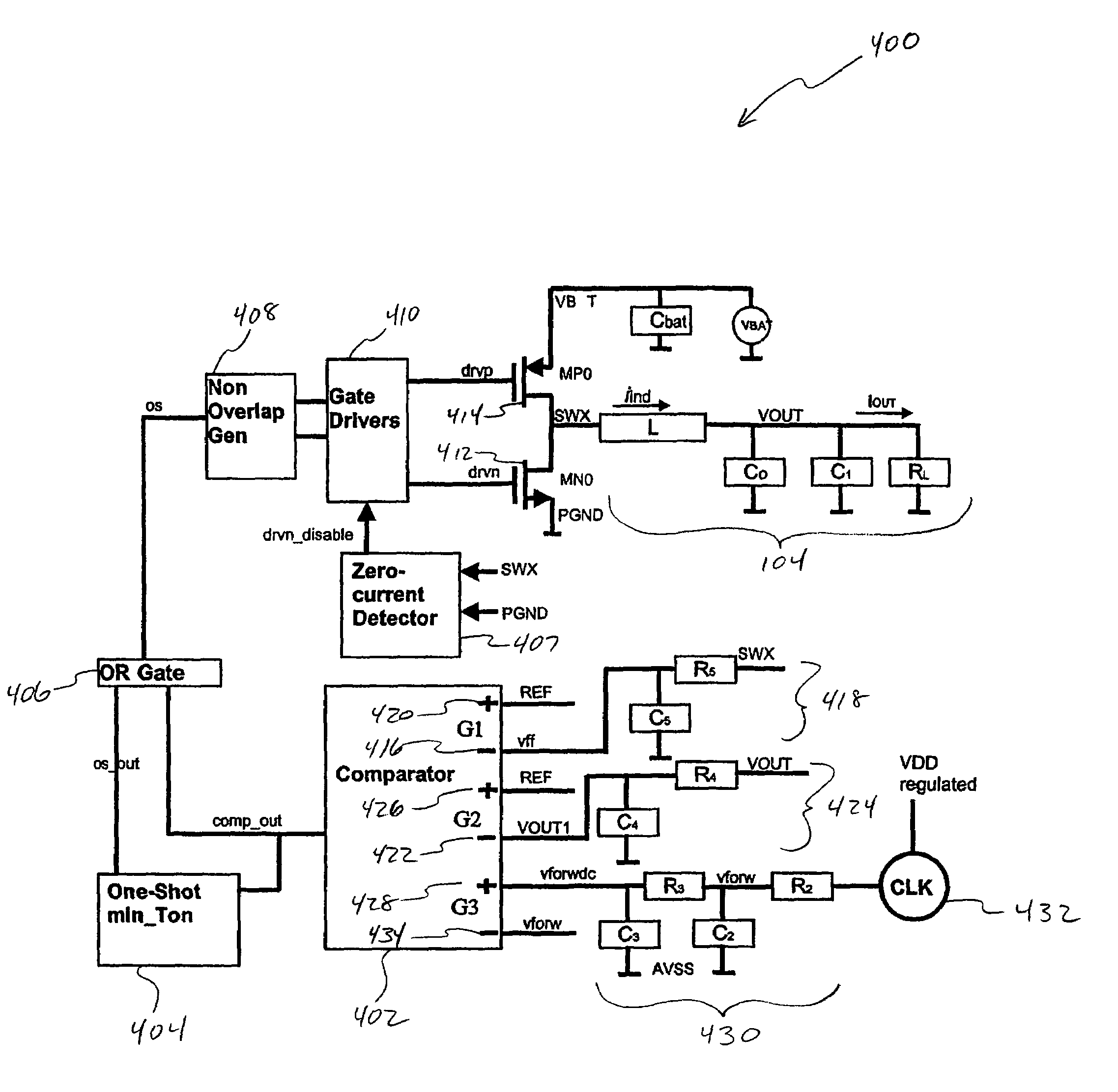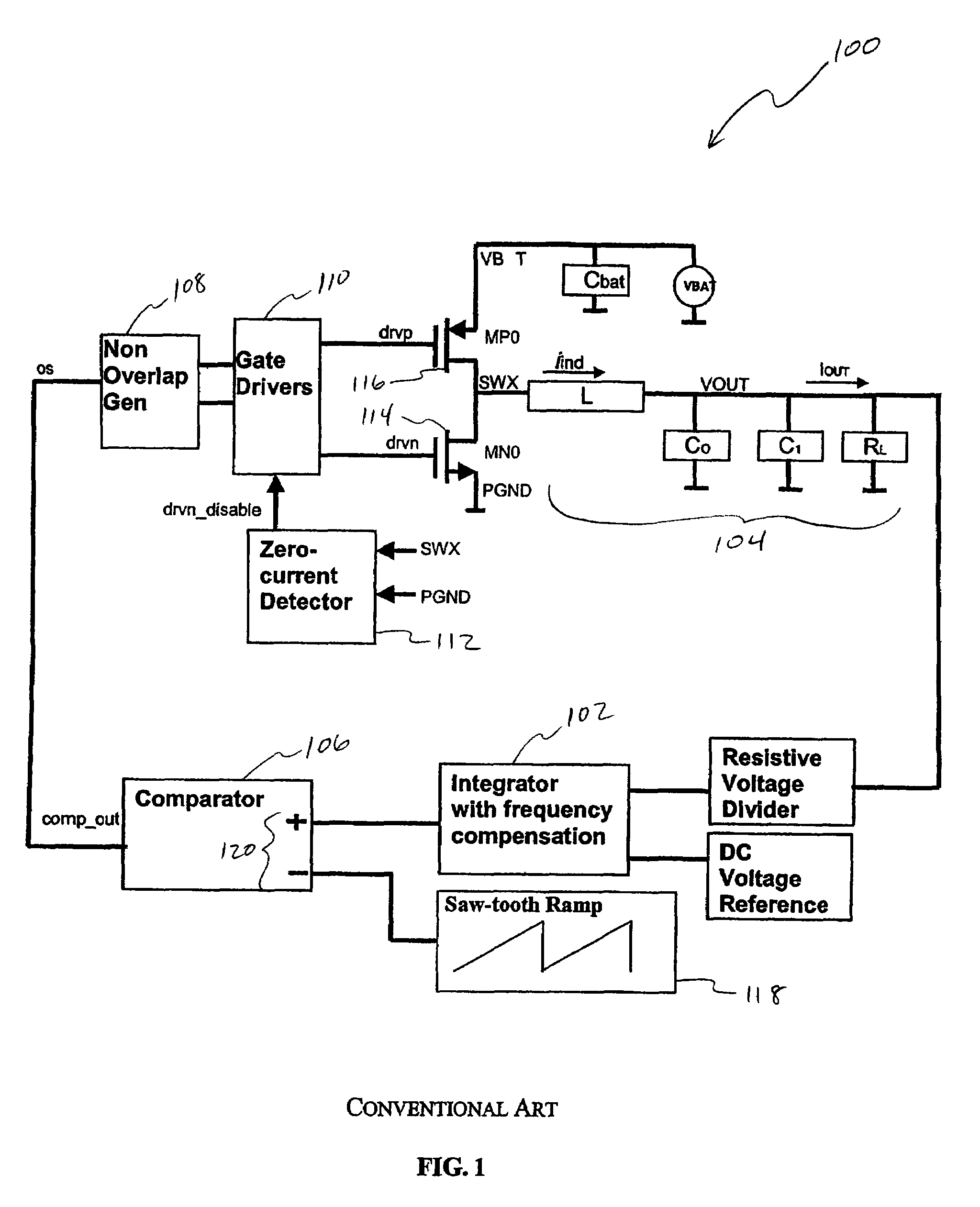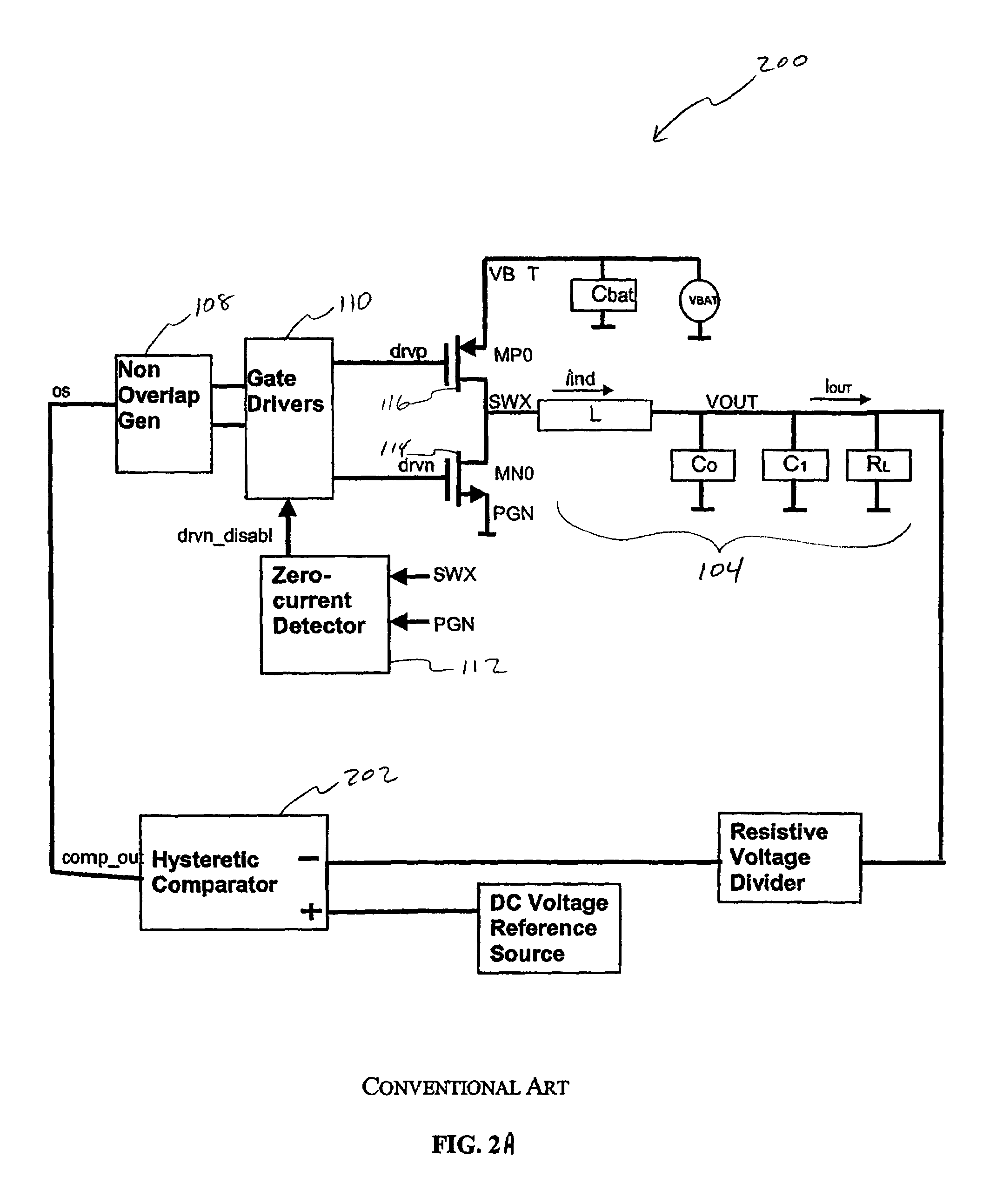PWM/burst mode switching regulator with automatic mode change
a switching regulator and burst mode technology, applied in the direction of electric variable regulation, process and machine control, instruments, etc., can solve the problems of low power efficiency of pwm switchers, inability to anticipate the load current condition and make mode changes, and many such dual-mode switching regulators with separate pwm and non-pwm regulation loops. , to achieve the effect of reducing output impedance, fast response and high bandwidth
- Summary
- Abstract
- Description
- Claims
- Application Information
AI Technical Summary
Benefits of technology
Problems solved by technology
Method used
Image
Examples
Embodiment Construction
[0024]FIG. 1 illustrates a conventional pulse width modulation (“PWM”) type switcher 100. PWM switcher 100 includes an integrator 102, LC filter 104, single-input comparator 106, non-overlap generator 108, gate drivers 110, zero current detector 112, NMOS switch 114, and PMOS switch 116. NMOS switch 114 and PMOS switch 116 output a feedforward signal SWX to integrator 102 and zero current detector 112. Integrator 102 is in a feedback loop to provide a large low frequency gain for the feedback loop. Comparator 106 receives the output of integrator 102 and a saw-tooth reference ramp voltage 118 as differential input 120.
[0025]A side effect of having integrator 102 in the feedback loop followed by comparator 106 is that it slows down the loop response. This is because a change in output voltage VOUT caused by a sudden change in load current IOUT is significantly attenuated by integrator 102. This limits the range of instantaneous duty cycle adjustment that can be made by comparator 106...
PUM
 Login to View More
Login to View More Abstract
Description
Claims
Application Information
 Login to View More
Login to View More - R&D
- Intellectual Property
- Life Sciences
- Materials
- Tech Scout
- Unparalleled Data Quality
- Higher Quality Content
- 60% Fewer Hallucinations
Browse by: Latest US Patents, China's latest patents, Technical Efficacy Thesaurus, Application Domain, Technology Topic, Popular Technical Reports.
© 2025 PatSnap. All rights reserved.Legal|Privacy policy|Modern Slavery Act Transparency Statement|Sitemap|About US| Contact US: help@patsnap.com



